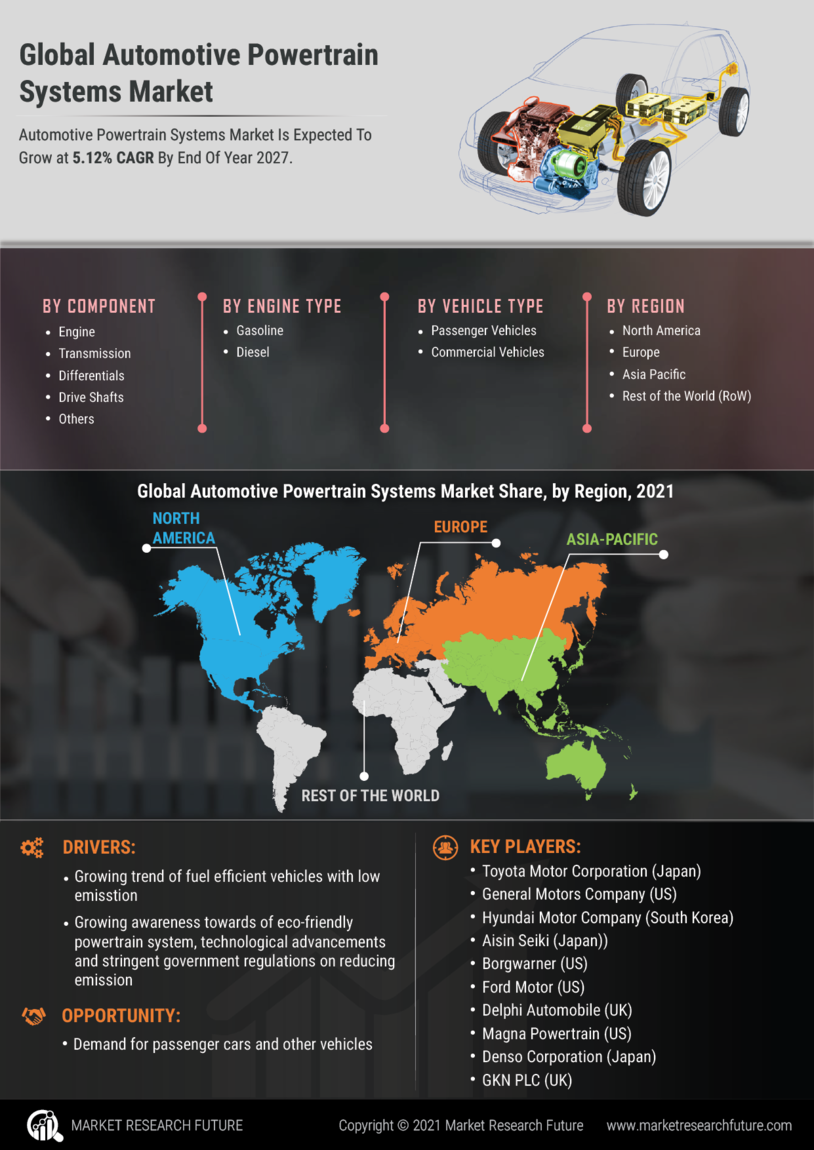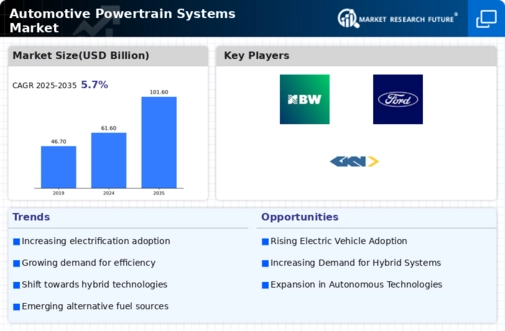Automotive Powertrain Systems Market Summary
As per Market Research Future Analysis, the global automotive powertrain systems market is projected to grow from USD 58.35 billion in 2023 to USD 86.01 billion by 2032, with a CAGR of 5.70% from 2024 to 2032. The market was valued at USD 55.2 billion in 2021, driven by the trend of downsized engines and increasing demand for automatic transmissions. The all-wheel-drive (AWD) system's introduction in compact and hybrid vehicles is enhancing market growth, particularly in the Asia-Pacific region, where consumer spending is rising. The engine segment dominated the market in 2021, while the transmission segment is expected to grow the fastest. The gasoline engine type led the market in 2021 and is projected to continue its growth during the forecast period. Passenger vehicles held the largest market share, with commercial vehicles being the fastest-growing segment.
Key Market Trends & Highlights
Key trends driving the automotive powertrain systems market include advancements in technology and changing consumer preferences.
- Market size in 2023: USD 58.35 billion; projected to reach USD 86.01 billion by 2032.
- CAGR from 2024 to 2032: 5.70%; driven by demand for automatic transmissions and downsized engines.
- Asia-Pacific region expected to grow at the fastest CAGR; driven by rising consumer spending in China and Japan.
- Gasoline segment dominated in 2021; projected to be the fastest-growing segment during the forecast period.
Market Size & Forecast
| 2023 Market Size | USD 58.35 billion |
| 2032 Market Size | USD 86.01 billion |
| 2021 Market Size | USD 55.2 billion |
| CAGR (2024-2032) | 5.70% |
Major Players
Major players include Toyota Motor Corporation (Japan), General Motors Company (US), Hyundai Motor Company (South Korea), Aisin Seiki (Japan), ZF Friedrichshafen (Germany), and others.














Leave a Comment